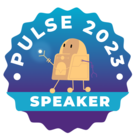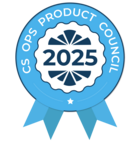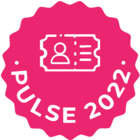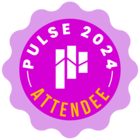Pulling together a few conversations on automating EBRs to create a different and better experience for your customers that scales.
Here’s a Recipe - the key ingredients and steps to define, set up and execute 100% automated EBRs via personalized email w/ embedded reports.
This is meant to be a starting point to design what will work for your team and customers. Do you run Digital EBRs via email today? Or other tools? What do they look like? What do you wish you had known before you started?
Survey Design: Define and design a Gainsight CS survey to capture customer's recent successes, ROI, and priorities.
- What key information do you need to understand the customer's perception of value?
- What topics are relevant to the majority of your customers?
- How can you phrase questions to get quantifiable responses?
Example: Your survey might include questions like "How has our product impacted your workflow in the last six months?", "Can you quantify the ROI you have achieved through our product?" or "What are your top three priorities for the next six months?"
Product Usage Data Integration: Use Gainsight PX to gather product usage and adoption metrics, integrating this data with Gainsight CS.
- What are the key features that drive value for your customers?
- What patterns of usage (or lack thereof) might indicate a customer is at risk?
- What trends in usage data might indicate a customer is ready for upsell or expansion?
Example: If your product is a project management tool, you could track metrics like the number of projects created, tasks completed, or users active per week. These could help identify high-engagement customers, or flag those who aren't fully utilizing the tool.
Community Insights Integration: Integrate data on customer's interactions within the community and knowledge base from InSided with Gainsight CS.
- What types of community interactions are most relevant to your EBRs?
- How does engagement with the community correlate with product usage or customer health?
Example: You can track and include data on how often the customer posts in the community forum, what topics they are interested in, or how often they seek help from the knowledge base. If a customer is highly engaged in the community, it could indicate a high level of interest and commitment to your product.
Define Rules for Personalization: Create rules in Gainsight CS that will determine what sections to include in the EBR email based on survey responses.
-
If a customer's survey response indicates a high satisfaction with the product and significant ROI achieved, what content should be included in the EBR?
-
If the survey response indicates issues or concerns, what resources or plans should be communicated in the EBR?
-
If product usage data indicates heavy use or under-utilization of a specific feature, what insights or resources can be included in the EBR?
-
If the customer has had multiple support tickets, how should this be addressed in the EBR?
Examples:
If a customer's survey response indicates a high satisfaction with the product and significant ROI achieved, the EBR could include a section discussing potential areas for expansion.If the survey response indicates issues or concerns, the EBR might include a section detailing planned improvements or resources for support.If the data shows under-utilization of a valuable feature, the EBR could include a training resource or use-case examples for that feature.
Create Personalized Report Templates: Use Gainsight CS to create templates for personalized reports based on survey responses, product analytics, community engagement, support tickets, etc
- What metrics or data points are most valuable to your customers?
- How can you present this data in a clear and compelling way?
Example: A template for a software product could include sections for user adoption rate, feature usage breakdown, ROI metrics, and a summary of support tickets raised and resolved.
Build EBR Email Template
Use the Journey Orchestrator to build an EBR email template with dynamic sections that can be populated based on reports and survey responses.
- What email format will be most engaging and effective for your customers?
- How can you make it easy for customers to step through and understand the EBR content?
Example: Your EBR email could include a brief introduction, a personalized report based on usage and survey data, links to relevant resources, and a feedback survey.
Feedback Survey: Prepare a feedback survey to include at the end of the EBR email, allowing customers to provide input on the EBR process and content.
-
What feedback do you need to improve future EBRs?
-
How can you make it easy for customers to provide meaningful feedback?
Example: A feedback survey could ask questions about the clarity and relevance of the EBR content, the user's satisfaction with the product, and suggestions for improvement. This could be presented in a combination of rating scale, multiple choice, and open-ended questions to get both quantitative and qualitative feedback.



